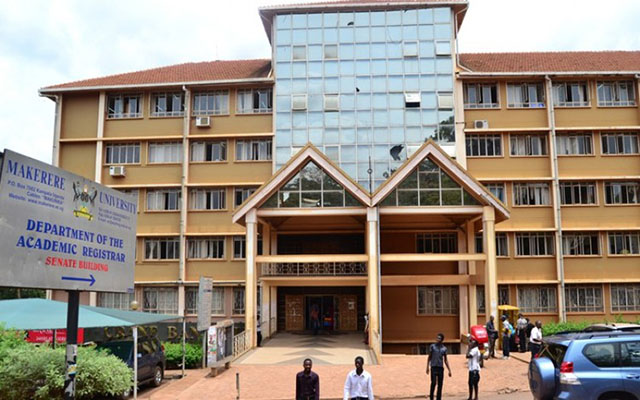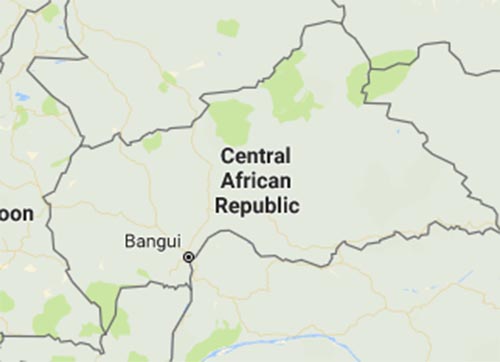The legacy of African universities


In the early 1940s, Makerere College was a centre of knowledge, with students coming from African countries as well as European countries. Makerere was known as the “Harvard of Africa”
Sekai Nzenza on Wednesday
“Do you have universities in Africa?” asked a relative of my friend during a dinner party when I was on a recent visit to Australia. I did not respond immediately. My Australian friend winked at me and smiled, gently and discretely shaking her head, apologising for the question from her sister-in-law.
She did not have to apologise. I am used to questions like that when I travel to Western countries. We were having a dinner party in the country, several miles from Melbourne in the state of Victoria, near a town called Colac.
It was in the middle of winter and freezing cold. There is something beautiful about the cold weather; fat cows, green grass and plenty of water.
Australia is a beautiful country, if you put aside the tragic colonial history of white Australians and how they massacred and dispossessed the Aborigines, took away mixed race children and introduced White Australia policy.
But times have changed. Some of us slipped through the immigration net and made Australia our home for a while.
In Australia, like in other Western countries, you will still find negative views about Africa that are disturbing.
I am used to such views because Australians are not alone in thinking Africa is one big country.
The image of Africa as a dark continent has remained and persisted in the minds of many Westerners for so long.
Americans, even African Americans, take the price for knowing very little about Africa. When I lived in America, I recall being asked some of these questions: “Do you have aeroplanes in Africa? Do you have houses in your country? Do you speak African? I know someone from Kenya called Okello, do you know him? Oh, you are from Zimbabwe, I am so sorry about the wars in your country. You sure must be glad to be out of there.”
So, at this dinner party last week, I took some time to respond to the question regarding the existence of universities in Africa. After a long pause, I said, “Yes, we do have universities in Zimbabwe. There are universities all over Africa.”
I then decided to give some details on the universities in Africa. I had the facts. The university that came to my mind immediately was not the University of Zimbabwe, which used to be the University of Rhodesia in colonial times. No. I thought of the University of Timbuktu in present day Mali.
Some people may say, ah, but that is too far in West Africa. But that should not make any difference because Africans must and should celebrate and embrace the heritage of Timbuktu.
It was the first and the oldest universities in Africa, built long before many European universities were built.
Timbuktu was a historical trading post on the trans-Saharan caravan route and the centre of Islamic culture. It is located on the southern edge of the Sahara desert, about 13 kilometres north of the Niger River. It was founded by the Tuareg Imashagan or Kel Tamasheq in the 11th century when they roamed the desert with their camels in search of water and grass.
In the dry season, they camped by the river for months. When the desert became green again, the men left the heavy goods under the care of old women called the Tin Abutut, who created a trading depot for goods coming from the desert. The name Timbuktu came from the black African women, the Tin Abutut. Situated right on the point where the Niger River flows northward going in to the Sharan desert, Timbuktu became a geographical meeting point for the Songhai, Wangara, Fulani, Tuareg and the Arabs.
During that time, gold came from the south, salt from the north and knowledge of philosophy, the sciences and religion from Timbuktu, where the “camel met the canoe”. Over time, Timbuktu became a meeting place for African scholars and merchants; a unique combination of intellectual scholarship and business. Books were written, copied and exported from Timbuktu. By the 12th century, Timbuktu had grown into a university and a centre of learning, the hub of knowledge and commerce. Long before Europeans built universities and colonised Africa, the university at Timbuktu had 25 000 students within a city of around 100 000 people.
The university curriculum was created around a structure known as the Circle of Knowledge, which included primary, secondary and superior levels. Africanus, a historian of the 16th century, wrote this about Timbuktu:
“There are many judges, doctors and clerics here, all receiving good salaries from King Askia Mohammed of the State of Songhay. He pays great respect to men of learning. There is a great demand for books and more profit is made from the trade in books than from any other line of business.”
The renowned African traveller and explorer, Abu-Bakr II from Mali, travelled from Timbuktu to the Americas several centuries before Christopher Columbus did. In 1339, the Mossi King invaded Timbukto and from then onwards, there were succession wars between various kings. As a result, Timbuktu suffered from destruction and tyranny.
In 1893, France colonised Mali and Timbuktu was under French rule until 1960, when Mali became independent. By that time, many of the valuable manuscripts of Timbuktu had been taken to Fez, Marrakech and Paris. But thousands of manuscripts remain up to this day in Timbuktu.
In December 1988, United Nations Educational, Scientific and Cultural Organisation (UNESCO) granted world heritage site status to Timbuktu, in recognition of its importance to world history.
As a symbol of African heritage and civilisation, the University of Timbuktu produced thousands of black African scholars and leaders. Few centuries later, in Uganda, Makerere University developed to be one of the oldest and most prestigious universities in Africa.
Makerere University was built in 1920 when the British Secretary of State, Winston Churchill approved the establishment of a “native technical school at Kampala”. Later on, it expanded into the Higher College for East Africa, awarding diplomas and certificates. Women began attending Makerere in 1945 and by 1949, Makerere Higher College became a University College of East Africa, awarding degrees of the University of London. In the early 1940s, Makerere College was a centre of knowledge, with students coming from African countries as well as European countries. Makerere was known as the “Harvard of Africa”.
In 1963, Makerere joined universities in Kenya and Tanzania and the University of East Africa (UEA) was formed.
Among the most notable graduates from Makerere University were Tanzanian presidents Julius Nyerere and Benjamin Mkapa, former president of the DRC , Laurent Desire Kabila, former Kenyan President Mwai Kibaki. After Uganda’s independence, Makerere became a centre for literary excellence and provided an environment for the development of African nationalist consciousness and resistance against colonial rule.
Many prominent writers like Nuruddin Farah, Ali Mazrui, David Rubadiri, Okello Oculi, VS Naipaul, Ngugi Wa Thiong’o, John Ruganda, Peter Nazareth and others were graduates of Makerere University.
Apart from Makerere, another most outstanding university in colonial days was none other than Fort Hare University, situated in Alice, in South Africa’s Eastern Cape Province. This was a key institution in higher education for Africans from 1916 to 1959. During colonial Rhodesia, an educated African was most likely to be a graduate of the University of Fort Hare. Fort Hare was the first university to open its doors to Africans in apartheid South Africa. Students at Fort Hare came from all over sub-Saharan Africa.
Like Makerere University, Fort Hare also created an environment that inspired black consciousness and resistance against colonialism. Many African resistance movements were created and nurtured at Fort Hare. Prominent graduates in the fields of politics, medicine, law, literature and art came from Fort Hare. Among them were none other than Nelson Mandela, Oliver Tambo, Govan Mbeki, Robert Sobukwe and Mangosuthu Buthelezi.
From Zimbabwe, our own President, His Excellency President Robert Mugabe graduated from Fort Hare and so did Herbert Chitepo, the historian and philosopher Stanlake Samkange and the first black Zimbabwean medical doctor Samuel Parirenyatwa. Despite historical changes at Fort Hare, an academic tradition of excellence remains to this day.
Among the outstanding universities in African is our own University of Zimbabwe (UZ) formerly the University of Rhodesia.
At its inception in 1952, the university had a special relationship with the University of London, with faculties in Agriculture, Arts, Commerce, Education, Engineering, Law, Science, Social Studies, Veterinary Sciences and Health Sciences. Although many other universities have been established across the country, the University of Zimbabwe is still the oldest institution of higher learning.
Such a chronology on African universities can certainly make a dinner party boring, especially to those who know little about Africa.
No. I did not give so many details on the history of universities in Africa to my hosts at the dinner party in Australia last week. But I did answer the question regarding the existence of universities in Africa.
I gave a short summary on how we Africans have built universities and acquired knowledge over the centuries.
Dr Sekai Nzenza is a writer and cultural critic.









Comments